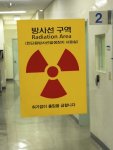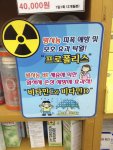- Joined
- Jul 4, 2008
- Messages
- 2,499
- Points
- 113
I though some of you might find this interesting.
The first pic is of Yonsei Severance Hospital in Seoul. This is the maxofacial X-ray room.
2nd pic is showing advice of how to deal with Cs137 pollution from Japan or a North Korea
nuclear test.
The pic from the Pharmacy explains that having Vitamin D and C can reduce the risk of
Cs137 intake. Cesium 137 isotope. IT is particularly dangerous to your Thyroid and bones.
Sad times we live in when we see this as a common reminder at a pharmacy.
Food for thought, perhaps?
The first pic is of Yonsei Severance Hospital in Seoul. This is the maxofacial X-ray room.
2nd pic is showing advice of how to deal with Cs137 pollution from Japan or a North Korea
nuclear test.
The pic from the Pharmacy explains that having Vitamin D and C can reduce the risk of
Cs137 intake. Cesium 137 isotope. IT is particularly dangerous to your Thyroid and bones.
Sad times we live in when we see this as a common reminder at a pharmacy.
Food for thought, perhaps?







